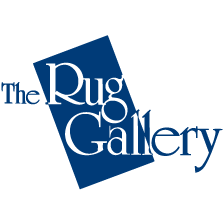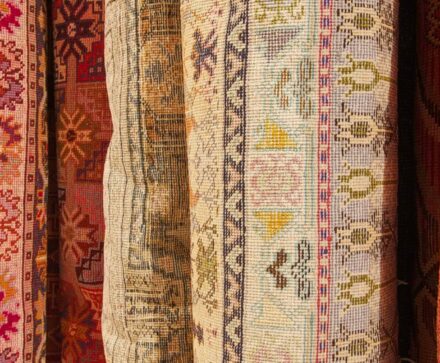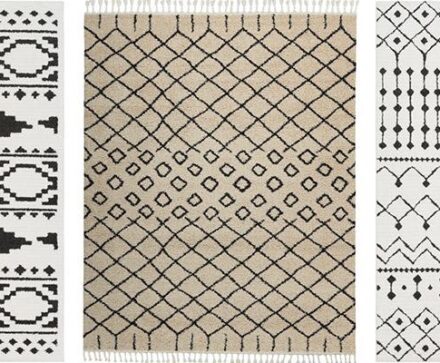The History of Moroccan Rugs

Moroccan rugs are a unique and beautiful type of rug that can add style to any room in your home. Learn more about their history in this podcast with Sam Presnell of The Rug Gallery.
LISTEN NOW
John Maher: Welcome to The Rug Gallery with Sam Presnell. The Rug Gallery is an Oriental rug company and carpet store in Cincinnati Ohio. I’m John Maher and I’m here with the owner of the Rug Gallery, Sam Presnell. Hi, Sam.
Sam Presnell: Hey John.
When Moroccan Rugs Became Available
John: Today we’re talking about Moroccan rugs. Sam when did Moroccan rugs first become available?
Sam: To the world or to the awareness of the buying public? It’s a big question
John: I guess both, I suppose Moroccan rugs have been around for thousands of years or something, but I suppose when did they become available to maybe what we’d call the Western world, I guess?

Sam: I think to the Western world, it’s probably been in the last century. It’s not a very well-known Oriental rug, that’s for sure. It’s a totally different look and style and feel than the traditional Persians or Turkish rugs that we saw in the past. They’ve been weaving Moroccan rugs for thousands of years. I mean it’s hard to imagine, I don’t think I’ve ever seen a rug more than 200 or 300 years old. I know that they must be there because of how Moroccan rugs are made. Basically, Moroccans are sheep herding tribes [in the] Atlas Mountain range. They herd sheep, they go from grazing land to grazing land and summer home to winter homes. Then, of course, the byproduct of having sheep is having the wool and then making something from it.
How Moroccan Rugs Have Changed Over Time
John: Okay so in the past, Moroccan rugs, of course, were used more for utility by the indigenous people there than they were just used for decoration. How has that maybe changed over the years of rug making?
Sam: I think it has changed dramatically and I think we see a lot of influence from the Western world upon their designs and colors. I mean traditionally, Moroccan rugs are very neutral — mostly beiges and natural colors. They didn’t really dye a lot at the beginning, they just used all the natural colors [of sheep wool] and made rugs out of that. Then they started up adding a lot more colors when dye started to become available. Remember, they’re in a very [arid climate], not a lot of colorful stuff around them, so they can only make from natural dyes up until probably the mid-1800s. After that, we started seeing more commercially available dyes in the marketplace and being traded.
Then we saw more and more colors coming out in the Moroccan rugs, but they definitely are very decorative [now] They could be a flat woven rug, they could be a real thick pile, two inches high or longer. They can be very fine in weaving, almost like an embroidered piece. We see a lot of, what we call, coverlets, [that] somebody would use for a bed as a diary rug. Then you will see them as wall hangings that would hang around the door, or on a wall, or by a window, or something like that to keep the house warm. There’s a lot of decorative uses. Even the tribal community will use it for bags for hauling grain and different things, salts and things that they were interested in transporting when they were moving.
Moroccan Rug Patterns
John: Okay, tell me a little bit more about the patterns that you tend to see in a Moroccan rug?

Sam: I think they’re usually very simple-scaled. You’ll see a lot of what I call the moss design or Moroccan design. You see a lot of it in today in textiles from every fabric that’s on the market to pottery. If you look at the pottery you’ll see a lot of the Moroccan influence. It is so popular, I really can’t explain it and it really is a very simple, open, [and] very modern look. Even though it’s hundreds and sometimes thousands of years old, you would swear that it’s fresh and new as today and somebody came up with it recently. But it’s all based on their history and their culture and it’s a very simple type of design. Sometimes it is so abstract you would swear it was a modern abstract painting some of the old tool designs we see, which today we make, they are so modern. You would think, “How is that a tribal rug and how [could] that possibly be 100 years old or 200 years old?”
John: I guess everything old is new again. It all comes back around, especially with design.
Sam: I think you’re right. There always is a circle to life. I think design is part of that too.
How to Find Genuine Moroccan Rugs
John: Where can people find genuine Moroccan rugs?
Sam: Well, that’s the hard part because you see so many things that are, what I call, faux or mock. Moroccan rugs, they’re not really truly woven in Morocco, they’re not woven [with] traditional wools, the barber wools that we see in traditional Moroccan rugs. You usually only find true Moroccan rugs of all types in very high-end stores, very special players like The Rug Gallery or other type of textile places or artsy places, things like that. They’re not inexpensive, which I think a lot of people see a lot of Moroccan designs that look just like the ones that we get out of Morocco for a fraction of the cost of what a [genuine] Moroccan rug would cost. People don’t realize how much more expensive a true Moroccan rug is and it may not be a better quality, but if you really look at them side by side you’ll see those subtleties of texture difference, wool differences, weaving techniques, fringing, all kinds of little things that make a Moroccan rug truly from Morocco identifiable. I very seldom see anything out in the marketplace except what I would call knock-offs or faux Moroccan designs.
John: All right, that’s really great information, Sam. Thanks again for speaking with me today.
Sam: You’re welcome, John. My pleasure, always.
John: And for more information about Sam, The Rug Gallery and oriental rugs and carpets visit [theruggallery.com] or call 513-793-9505. Make sure you catch the latest episodes by subscribing to this podcast on iTunes, and if you can take the time to give us a review on iTunes as well, we’d appreciate that. See you next time on The Rug Gallery.



